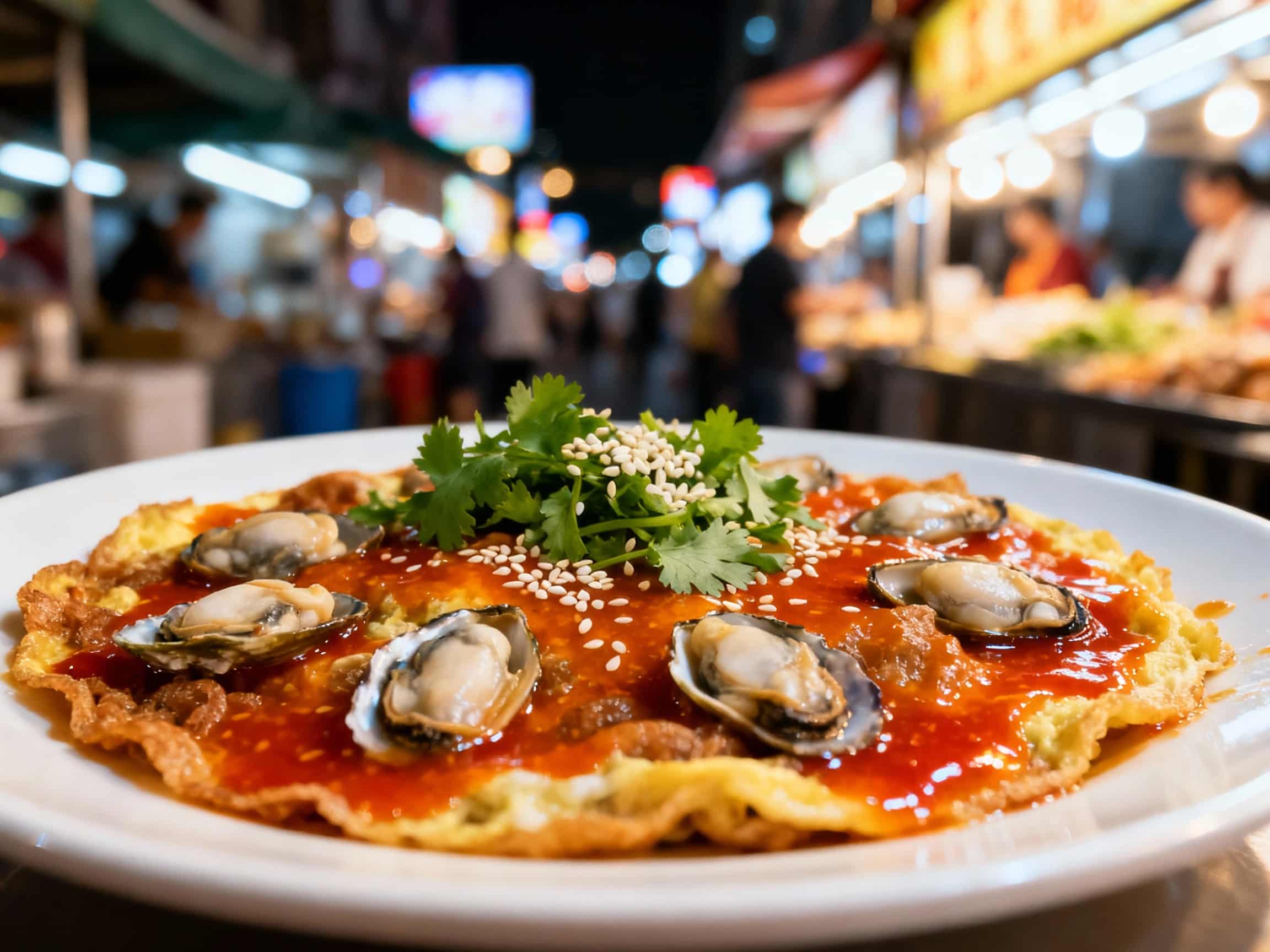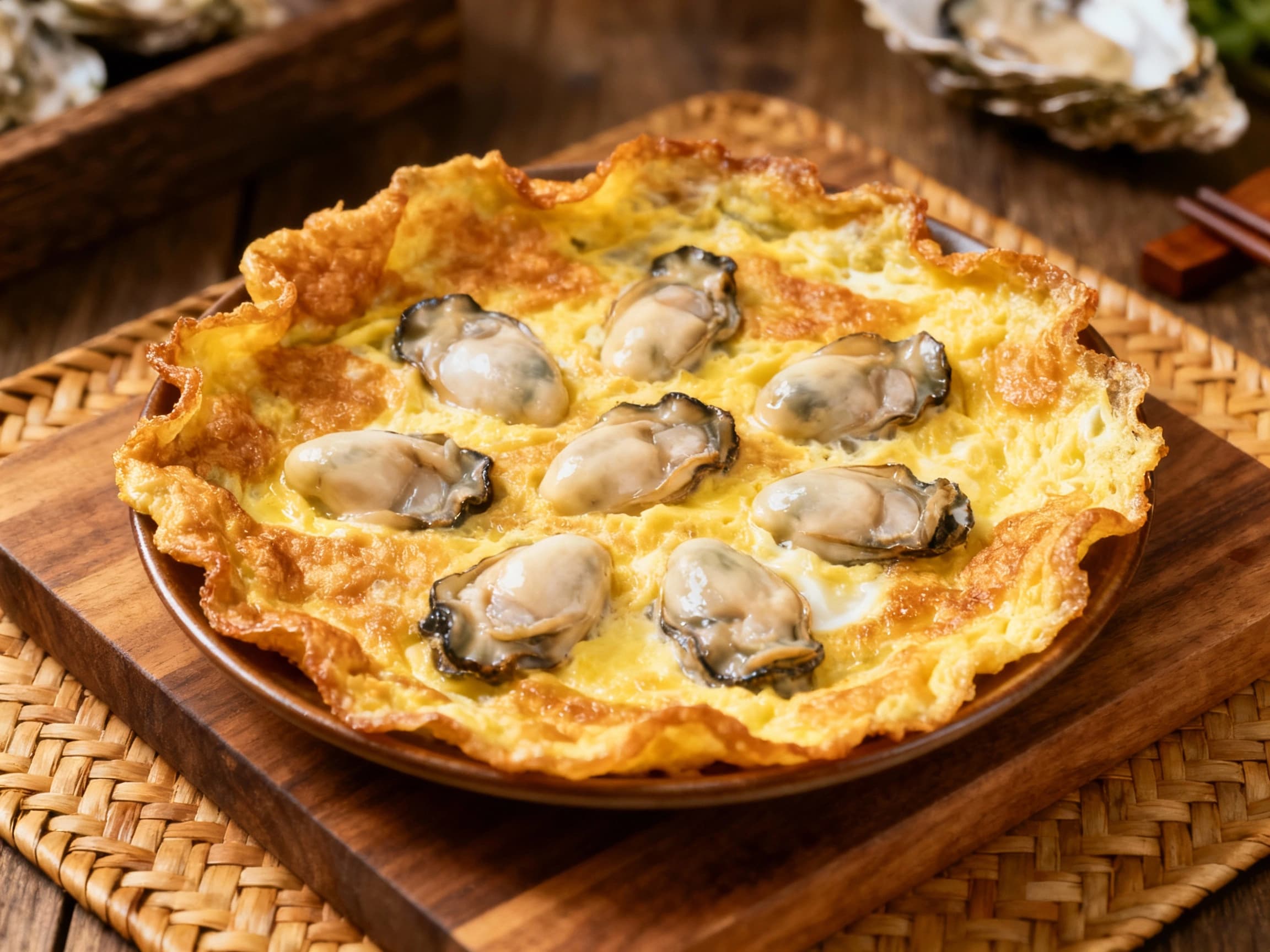
Oyster Omelet
蚵仔煎
- Country
- Taiwan
- Region
- Taiwan
- Recipes
- 3 Recipes
Dish information
Oyster Omelet, known as 'O-Ah Jian' (蚵仔煎) in Taiwanese Hokkien and 蚵仔煎 in Mandarin, is a quintessential Taiwanese street food that showcases the island's abundant seafood and culinary ingenuity. Its exact origins are somewhat murky, but it's widely believed to have emerged in the coastal regions of Taiwan, likely during the Japanese colonial period or shortly thereafter, as a way to utilize fresh oysters and local produce. The dish is heavily influenced by traditional Fujianese cuisine, particularly variations of oyster omelets found in regions like Xiamen and Quanzhou. What distinguishes the Taiwanese Oyster Omelet is its unique texture and preparation. Unlike mainland Chinese or Southeast Asian versions, it features a distinctively chewy, gelatinous batter made from sweet potato or tapioca starch mixed with water. This batter is poured over freshly shucked plump oysters and crisp vegetables, typically Chinese cabbage or lettuce, and bound together with eggs. The omelet is then pan-fried until golden brown and slightly crispy on the edges, while remaining tender and slightly gooey within. A crucial component is the sauce, a thick, sweet and savory concoction often made with chili paste, plum sauce, and other seasonings, which is generously slathered over the finished omelet. O-Ah Jian is a staple at night markets across Taiwan, served in countless variations, each vendor adding their own subtle twist to the sauce or batter. It has become a symbol of Taiwanese street food culture, enjoyed by locals and tourists alike for its unique blend of textures—chewy, tender, crispy—and its rich, satisfying flavor profile. Its popularity has transcended Taiwan, appearing in Taiwanese restaurants globally, a testament to its enduring appeal and status as a beloved culinary icon.
Timeline
Emergence of early forms of oyster omelets in Taiwan, influenced by Fujianese cuisine.
The dish begins to gain popularity, especially in coastal areas with access to fresh oysters.
Oyster Omelet solidifies its status as a signature Taiwanese street food, common in night markets.
Introduction of distinct sweet and spicy sauce variations, becoming a standard component.
Increased international recognition as Taiwanese cuisine gains global popularity.


